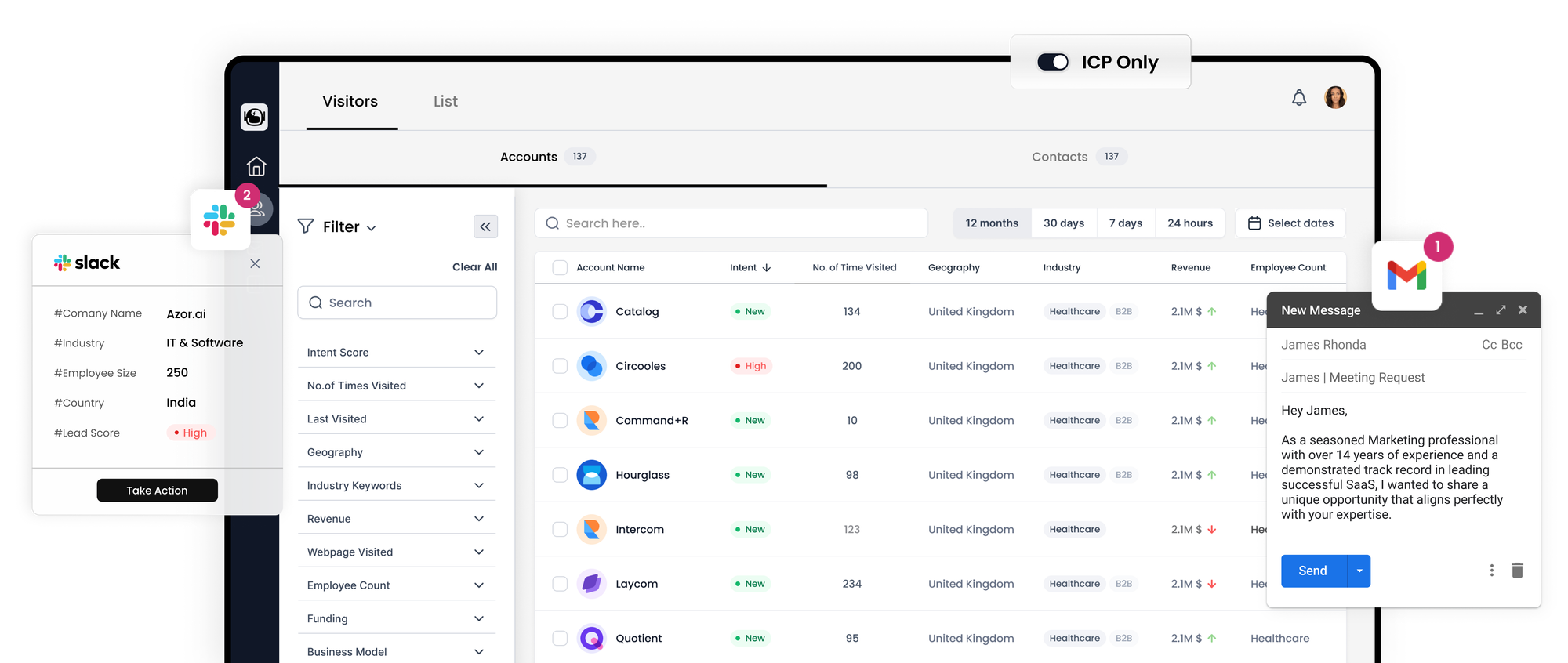B2B Sales Explained: A Comprehensive Guide

B2B sales, short for business-to-business sales, involve the complex process of selling products or services from one company to another. It's a multifaceted domain that demands a team adept in strong communication, shrewd negotiation, and data-backed decision-making.
This intricate sales model is characterized by a series of elaborate steps that range from initial outreach efforts like cold calls and personalized emails to meticulous planning of meetings and demos, all while deeply understanding the unique challenges and reservations of potential buyers. Although B2B transactions are typically lengthier and more intricate than consumer sales, they culminate in substantial transaction values and a boost in revenue.
This resource center is brimming with insights and guidance on B2B sales. Utilize the links provided to navigate through the plethora of information available on this page.

B2B vs. B2C Sales: Delineating the Differences
Unlike the more straightforward B2C sales where transactions are with individual consumers, B2B sales navigate the complex landscape of corporate decision-making. This involves contending with informed business professionals, who often evaluate multiple competing products simultaneously.
B2B transactions are not only about higher stakes and pricing but also involve engaging multiple stakeholders over a protracted sales cycle. Especially in scenarios devoid of prior inbound marketing leads, these businesses require targeted prospecting and nurturing strategies, steeped in research and clearly delineated outbound tactics.
Who Manages B2B Sales?
The rigorous endeavor of B2B sales calls for a dedicated team to manage and streamline the process, from initial prospect engagement to converting qualified leads into sales.
This critical role is typically handled by Sales Development Representatives (SDRs) who oversee essential tasks such as:
- Cold Calling: Initiating contact and dialogue with potential leads over the phone.
- Outbound Emailing: Dispatching targeted sales emails to curated lead lists.
- Social Selling: Cultivating relationships and making sales pitches via social media platforms.
Upon a prospect's agreement to a demo or meeting, the baton is passed to Business Development Managers (BDMs) who take over to negotiate and seal the deal.
B2B sales also rely heavily on a synergistic relationship with marketing. Seamless alignment between these departments is key to pipeline fortification and expansion, beginning with a consensus on the Ideal Customer Profile (ICP) and progressing to shaping the company’s Total Addressable Market (TAM).
A data-savvy marketing team crafts and disseminates content that captivates the ICP, employing an array of digital marketing techniques—blogging, whitepapers, email campaigns, paid advertising, and social media engagement—to enhance B2B sales efficacy and accelerate the sales cycle with a steady influx of warm leads.
Ultimately, B2B sales and marketing units converge to form a more expansive revenue team.
The B2B Sales Process Decoded
Achieving a sale necessitates employing an array of B2B lead generation methods, all woven into a structured 6 to 8-step sales process.
Here's an overview of that process:
1. Define Your TAM
Determining your target audience is the first crucial step. Your TAM gauges a lead's potential, and this initial assessment ensures your resources are judiciously invested in the right prospects.
2. Conduct Thorough Research
To triumph in sales, immerse yourself in understanding your prospects—identify their pain points and offer irresistible solutions, all while possessing an encyclopedic knowledge of your product.
3. Lead Qualification
Ensure your prospects are genuinely interested and worthy of further pursuit. Engage them via calls or an email sequence to sift through and retain only the most promising leads.
4. Pitch Your Offering
With a deeper understanding of your prospects, craft a pitch that resonates with their specific requirements.
5. Navigate Objections
Anticipate and skillfully address any reservations your prospects may have. Each objection is an opportunity to provide clarity and demonstrate the value of your offering.
6. Seal the Deal
Discuss terms, negotiate where possible, and crystallize the agreement details, paving the way for a formal contract signing.
7. Execute a Follow-Up
Post-agreement, reinforce the deal's terms with a summary email to reiterate the discussion points and cement the engagement.
8. Conduct a Check-In
Allow your new clients time to integrate your product or service. Later, reach out for feedback, which can offer valuable insights into both your performance and customer satisfaction.
Core B2B Sales Activities
Identifying the optimal B2B sales approach varies by industry. However, several core activities are essential across the board, including:
- Outbound Prospecting: Direct engagement with your target market through cold calls, outbound sales emails, and social selling, aiming to schedule meetings.
- Product Demonstrations: Showcase your product's benefits during scheduled meetings, emphasizing its added value to the prospect's business.
- Closing: Conclude the sales process by finalizing terms, prices, and acquiring any additional necessary details, culminating in contract signing.
Key B2B Sales Metrics
Sales metrics are indispensable for assessing team performance and refining your sales strategy. They allow sales leaders to measure various aspects, from individual productivity to overall success rates and revenue.
By comparing inbound and outbound efforts and collecting separate metrics for SDRs and MDRs, leaders can track team and individual KPIs effectively.
The Role of Data in B2B Sales
Accurate B2B data is not just about connecting with suitable prospects; it's foundational to understanding customers and making informed decisions.
Quality data is essential, enabling correct lead sourcing and ensuring no opportunities slip through the cracks, which directly affects the bottom line in terms of sales and revenue. Furthermore, data underpins the efficacy of B2B sales tracking, which is crucial for forecasting, analytics, and performance evaluations at every sales cycle stage.
